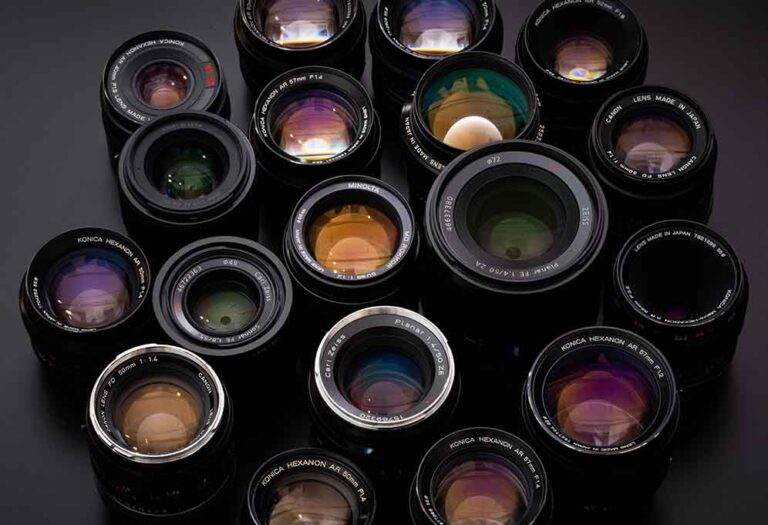What Does It Mean Camera Lens Is Soft – An Essential Tips for Sharp Images!
A “soft” camera lens refers to images that lack sharpness and clarity, often appearing blurry or faded. This can result from factors like lens quality, aperture settings, focus accuracy, camera shake, and environmental conditions.
In this article, we’ll explore the meaning of soft lenses, the factors that contribute to this characteristic, how to identify softness in your photos, and how to address it in your photography.
Understanding Lens Softness:

When photographers refer to a lens as being “soft,” they generally mean that the images produced lack sharpness and clarity. Imagine taking a stunning landscape shot only to find that the details are blurry and the colors seem muted.
That’s the frustration of dealing with a soft lens. Softness in an image can manifest in various ways:
- Blurry Edges: A soft lens often produces images where the edges of objects appear blurry or indistinct. This can be particularly problematic when photographing subjects that require crisp detail, like portraits or architecture.
- Faded Colors: You might notice that the colors in soft images lack vibrancy. Instead of popping, they can appear dull, robbing the photograph of its intended impact.
- Lack of Contrast: In addition to diminished detail, soft lenses can create images with lower contrast. This results in photos that feel flat or lifeless, lacking the depth that makes images visually appealing.
- Inconsistent Sharpness: Sometimes, certain areas of the image may be sharp while others remain soft. This can be due to improper focusing or the lens’s optical design.
Causes of Softness in Camera Lenses:
Understanding the reasons behind lens softness is key to addressing it. Let’s dive into the common causes of softness in camera lenses:
Quality of the Lens:
The quality of the lens itself is paramount. High-end lenses are designed with superior glass and advanced coatings that minimize optical aberrations. In contrast, lower-quality lenses may struggle to produce sharp images due to:
- Inferior Glass: Cheaper lenses often use lower-quality glass, which can introduce distortion and softness.
- Lens Construction: The way a lens is built the number of elements it contains and how they are arranged plays a significant role in how light is transmitted and focused. High-quality lenses are often constructed with multiple elements to correct for various optical imperfections.
Also read: Do Ring Cameras Work Without Wifi – Tips and Tricks!
Aperture Settings:
The aperture setting of your lens can significantly affect sharpness. Every lens has an ideal aperture often referred to as its “sweet spot” where it performs best in terms of sharpness and clarity. Here’s how the aperture affects image quality:
- Wide Apertures: Using a very wide aperture (like f/1.4 or f/2.8) can lead to a shallow depth of field. While this can create a beautiful background blur, it also means that only a small portion of the image is in focus, which can lead to softness in the areas that fall out of focus.
- Small Apertures: On the other end of the spectrum, using a very small aperture (like f/16 or f/22) can cause diffraction. This phenomenon results in a reduction of sharpness across the entire image, making it look soft overall.
Focus Accuracy:
Achieving sharp focus is crucial in photography. Even the best lens will produce soft images if the focus is off. Here’s what to consider:
- Autofocus Systems: Sometimes, the camera’s autofocus may not lock onto the desired subject, especially in low-light conditions or with fast-moving subjects. This can lead to missed focus and soft images.
- Manual Focusing: If you’re using manual focus, it’s easy to misjudge the precise point of focus. A slight shift can mean the difference between sharp and soft.
Camera Shake:

Camera shake is another common culprit of softness in images. It can occur when the shutter speed is too slow for the focal length you are using. Here are some tips to avoid camera shake:
- Shutter Speed: A general guideline is to use a shutter speed that is at least as fast as the reciprocal of your focal length. For example, if you’re shooting with a 50mm lens, aim for a shutter speed of at least 1/50 second.
- Image Stabilization: Many modern lenses come with built-in image stabilization (IS) features, which can help counteract the effects of camera shake. If your lens has this feature, make sure to enable it when shooting handheld.
Environmental Factors:
Finally, external conditions can play a significant role in the quality of your images. Factors like lighting, heat, and weather can influence sharpness:
- Lighting Conditions: Low light can force your camera to use longer exposure times, increasing the risk of camera shake and resulting in softer images.
- Heat Distortion: On hot days, the air can shimmer, causing heat waves that distort the light entering the lens and make images appear softer.
Identifying Softness in Your Images:
Before you can fix a soft lens, you need to determine whether your images are genuinely soft or if other factors are at play. Here are some ways to identify lens softness:
Conducting a Sharpness Test:
One effective method to test your lens is to conduct a sharpness test. Find a detailed subject, like a printed text or a complex pattern, and shoot at various apertures. Check the resulting images for clarity at different focal lengths and aperture settings.
Pay attention to how the sharpness changes across the frame, as some lenses may perform better in the center than at the edges.
Also read: List Of Apps To Use My Iphone As A Camera – Top Apps Reviewed!
Using a Tripod:
Stabilizing your camera can help you eliminate the variable of camera shake. Set up your camera on a tripod, use a remote shutter release or a timer, and take a series of shots at different settings.
If the images remain soft, the issue may lie with the lens itself. If the images remain soft despite using a tripod, the issue may lie with the lens itself, indicating that it may need adjustment or replacement.
Compare Lenses:
If you have multiple lenses, take identical shots with each one under the same conditions. This comparison will help you identify if one lens consistently produces softer images than the others.This method will help you identify if one lens consistently produces softer images than the others, guiding your future equipment choices.
How to Fix Softness in Your Images:

If you discover that your images are soft, don’t worry! There are several strategies you can employ to achieve sharper photographs:
Invest in Quality Lenses:
Consider upgrading to high-quality lenses known for their sharpness. Brands like Canon, Nikon, and Sony offer lenses with excellent reputations for image clarity, ensuring that you capture the finest details in your photographs.
Prime lenses typically have larger maximum apertures, allowing for better low-light performance and enhanced depth of field control.s
Optimize Aperture Settings:
Experiment with different aperture settings to find the sweet spot for your lens. Most lenses tend to perform best around f/5.6 to f/8. Take test shots at various apertures to determine where your lens shines. T
aking test shots at various apertures will not only help you determine where your lens shines but also allow you to understand how changes in aperture impact exposure and depth of field.
Ensure Accurate Focus:
Make sure to double-check your focus settings. When using autofocus, select a single focus point and ensure it aligns perfectly with your subject. In situations where precision is critical, consider using manual focus and magnifying the viewfinder to confirm focus accuracy. This minimizes the chance of the camera locking focus on the wrong area, especially in complex scenes.
Also read: Are Traffic Cameras A Threat – A Deep Dive into Their Effectiveness!
Utilize Stabilization Techniques:
To minimize the risk of camera shake, always use a tripod when possible, especially in low-light conditions. If you’re shooting handheld, activate any image stabilization features your lens may have.
A sturdy tripod helps eliminate all forms of camera shake, ensuring that your images are sharp and clear, even during long exposures.
Edit with Care:
If your images still lack sharpness after taking the necessary precautions, you can use editing software to make minor adjustments. Programs like Adobe Lightroom and Photoshop offer sharpening tools that can enhance clarity without overdoing it. However, proceed with caution, as excessive sharpening can introduce unwanted artifacts.
Post-Processing Techniques:
Explore advanced post-processing techniques to further enhance sharpness. Using software like Lightroom, adjust the clarity and texture sliders, which can help add definition to your images. Experiment with selective sharpening on areas of interest while keeping the background softer to maintain a natural look.
FAQ’s
1. What does it mean if my camera lens is soft?
A soft lens produces images that lack sharpness and clarity, resulting in blurry edges, muted colors, and lower contrast.
2. What causes a lens to be soft?
Common causes include poor lens quality, incorrect aperture settings, focus inaccuracies, camera shake, and adverse environmental conditions.
3. How can I test if my lens is soft?
You can conduct a sharpness test by photographing a detailed subject at various apertures, or by comparing images taken with different lenses under the same conditions.
4. Can a soft lens be fixed?
While some softness may be inherent to lower-quality lenses, improving focus accuracy, using appropriate aperture settings, and stabilizing the camera can help mitigate softness.
5. What should I do if my photos are consistently soft?
Consider investing in a higher-quality lens, optimize your aperture settings, ensure accurate focus, and use stabilization techniques to achieve sharper images.
Conclusion
Understanding what it means when a camera lens is soft is essential for any photographer aiming to improve their craft. By recognizing the factors that contribute to softness and taking the necessary steps to address them, you can enhance the quality of your photographs.







